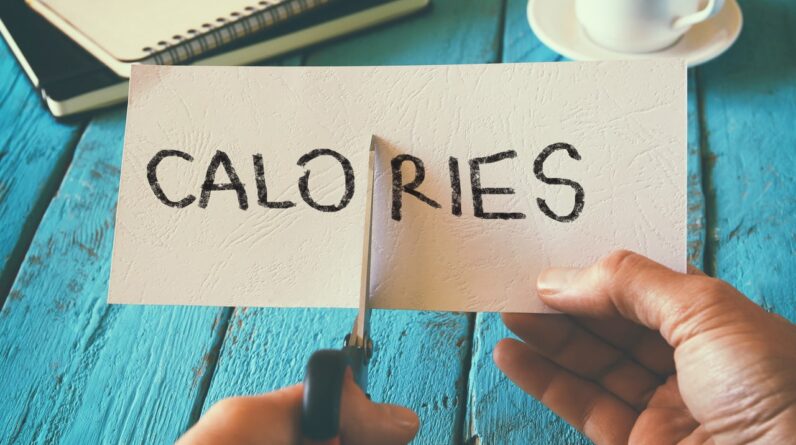
This post may contain affiliate links, which helps keep this content free. Please read our disclosure for more info.
You want to lose weight, right? But something is holding you back. It’s probably some sneaky habits that are sabotaging your weight loss goals.
You’ve tried various diets, joined the gym, and committed to a healthier lifestyle, yet the scale doesn’t seem to budge.
Could it be those late-night snacks or the sugary drinks that you can’t seem to resist? Or perhaps you’re falling into the trap of emotional eating or eating too quickly without even noticing it?
Understanding the bad habits that make you gain weight is half the battle, and that’s exactly what this post is here for. Together, we’ll identify those habits and give you the tools to overcome them.
You can quickly make simple yet effective changes to help you reach your desired weight without feeling deprived or overwhelmed.
Keep reading to uncover the top bad habits that might be standing in your way and learn how to conquer them once and for all!
1. Eating Late at Night
Eating late at night? You’re not alone. This habit can lead to unwanted weight gain, and it’s something many of us are guilty of.
The problem with eating late is that our bodies are winding down for the day, and our metabolism is slowing. This means the calories consumed late at night may not be burned off as efficiently.
But why does this happen? Some research suggests that our internal clocks, known as circadian rhythms, play a role in this.
Our bodies may not process food as efficiently later in the day, and this could be contributing to weight gain.
The good news is that with a little mindfulness and planning, you can overcome this habit.
Try setting a specific time for your last meal of the day, and stick to it. Creating an evening routine that doesn’t revolve around food might help too.
Perhaps reading a book, engaging in a hobby, or taking a warm bath instead of reaching for those chips.
Still feeling peckish? A warm cup of herbal tea might be a comforting alternative to late-night snacks.
And if you feel the urge to eat, opting for something light and nutritious, such as a small serving of yogurt or a few berries, is a better choice.
By recognizing this habit and taking proactive steps, you can create a healthy nighttime routine that supports your weight loss efforts. It’s a simple change that can make a significant difference!
2. Consuming High-Sugar Drinks
Those high-sugar drinks might taste sweet, but they can be a stealthy source of extra calories.
Sodas, fruit juices, energy drinks, and specialty coffees often contain surprising amounts of sugar that can quickly add up throughout the day.
And what’s tricky about these sugary beverages is that they don’t make you feel full like solid food does, so you might end up consuming more calories without even realizing it.
You may wonder, “What’s the big deal about a little sugar?” But over time, those extra calories can lead to weight gain.
Not to mention, excessive sugar consumption has been linked to other health concerns, such as increased risk of heart disease and type 2 diabetes.
Side Note: Think switching to diet drinks is the solution? Think again! Some studies have shown that diet beverages, despite having fewer or no calories, can actually increase cravings for sweets and may not be the best choice for weight loss either.
So what can you do about it? Start by becoming more aware of what you’re drinking. Read labels and choose beverages with low or no added sugar.
Better yet, opt for natural choices like water, herbal tea, or even a splash of lemon in sparkling water to quench your thirst.
Infusing water with fresh fruits like strawberries, cucumbers, or mint can add a burst of flavor without the added sugar.
Making the switch from high-sugar drinks to healthier alternatives might take some getting used to, but it’s a change that can have a big impact on your weight loss goals.
You’ll be cutting empty calories and nurturing your body with hydrating, nutritious options. It’s a win-win for your taste buds and your waistline!
3. Lack of Portion Control
Portion sizes out of control? You’re not alone in this. It’s become all too common in our world of super-sized meals and heaping plates.
The problem is that these larger portions can make it easy to eat more food than your body actually needs, leading to unnecessary weight gain.
Why does this happen? Part of the issue is visual. Larger plates make portions look smaller, which can inadvertently lead you to serve yourself more.
Restaurants are often guilty of this too, serving oversized portions that can be double or even triple the recommended serving sizes.
But the good news is, you have the power to take control of your portions. Consider using smaller plates, bowls, and utensils.
This simple switch can help you serve yourself more reasonable portions while still making your plate look full.
Also, try serving yourself mindful portions. This means paying attention to your body’s cues and eating only until satisfied, not stuffed.
Reconnect with your body’s natural hunger and fullness signals, something we often lose touch with. Slowing down, chewing thoroughly, and taking time to enjoy each bite can help you tune into those signals.
If you’re dining out, don’t be shy about asking for a to-go box. You can take half of your meal home for later, rather than feeling pressured to clean your plate.
Also, it’s not just about the size of your portions but also the quality of what you’re eating. Fill your plate with nutrient-dense foods like vegetables and lean proteins. These foods can help you feel satisfied with smaller portions.
Learning to control your portions is not about deprivation; it’s about balance and understanding what your body truly needs.
4. Not Drinking Enough Water
Water is vital for your health, yet it’s so easy to forget to drink enough of it. We often overlook this simple yet essential component of our diet.
But did you know that not drinking enough water can actually hinder your weight loss efforts?
Dehydration can sometimes be mistaken for hunger, leading you to eat when what your body really needs is hydration.
Plus, water is necessary for nearly every function in your body, including digestion and metabolism. Without enough water, your metabolism may slow down, making it harder to burn calories.
So how much water should you be drinking? A common guideline is to aim for eight 8-ounce glasses per day, but it can vary depending on factors like your activity level and climate.
And no, coffee and soda don’t count! Though they provide hydration, they can also contain added sugars or caffeine, which might not be the best for your weight loss goals.
Here are some tips to ensure you’re getting enough water:
- Keep a reusable bottle nearby: Having water within reach makes it easier to remember to sip throughout the day.
- Flavor your water naturally: If you find plain water boring, add a splash of lemon, lime, or some fresh mint to make it more appealing.
- Set reminders: Use your phone or watch to remind you to drink water regularly.
- Eat water-rich foods: Foods like cucumbers, summer squash, and strawberries can contribute to your hydration.
Thirst can be a sign that you’re already dehydrated, so don’t wait until you feel thirsty to grab a glass of water.
By keeping yourself well-hydrated, you’ll support your metabolism, control hunger more effectively, and give your body the hydration it needs to function optimally.
5. Mindless Eating
Mindless eating in front of the TV, while scrolling through your phone, or even while working at your desk? It’s a common habit that many of us fall into.
But what might seem like a harmless multitasking activity can actually have a significant impact on your weight loss goals.
When you eat without paying attention to what and how much you’re eating, it’s easy to consume more than you need.
Distractions divert your focus from the food, making it harder to recognize when you’re satisfied. Before you know it, you’ve polished off an entire bag of chips or a bowl of ice cream without really tasting or enjoying it.
So how can you combat mindless eating? Here are some strategies:
- Eat at the Dinner Table: Make it a habit to eat your meals at the dinner table without distractions like TV, phones, or other electronic devices. It helps to create an environment that encourages you to focus on your food.
- Focus on the Flavors and Textures: Pay attention to the taste, texture, and aroma of your food. This mindful eating practice can enhance your enjoyment of the meal and help you tune in to your body’s hunger and fullness cues.
- Use Smaller Plates and Utensils: This can help you eat more slowly and be more conscious of portion sizes.
- Avoid Eating Straight from the Package: Serve yourself a portion in a bowl or on a plate to help control the amount you eat.
Related Article: A Comprehensive Guide to Mindful Eating: Benefits, Techniques, and More
This doesn’t mean you should be eating in silence or turning mealtime into a solemn occasion. It’s more about being present with your food and appreciating what you’re eating.
By connecting with your meal and enjoying the process of eating, you can develop a healthier relationship with food and avoid overeating.
Mindless eating might seem like a tough habit to break, especially if you’re used to multitasking during meals. But with some mindful changes, you can transform the way you eat and take a big step towards your weight loss goals.
6. Ignoring Food Labels
Ignoring food labels can be a slippery slope. Those small print details on the back of food packages contain essential information that might make or break your weight loss efforts.
In our busy lives, it’s easy to grab products off the shelf without a second glance. But taking the time to understand what’s in your food can be a game-changer for your diet.
Here’s why paying attention to food labels matters:
- Understanding Ingredients: Labels reveal what’s inside a product, including additives, preservatives, or hidden sources of sugar and fats. Sometimes seemingly healthy foods are hiding unhealthy secrets.
- Knowing Sugar Content: Many products contain added sugars that can quickly sabotage your weight loss plans. Checking the label can help you identify these hidden sugars.
- Portion Sizes: What you think is a single serving might be two or three according to the label. Understanding portion sizes can help you manage your intake more accurately.
How can you make label-reading a regular part of your shopping routine? Here are some tips:
- Start with the Ingredients List: Look for real, whole-food ingredients. If the list is full of things you can’t pronounce, you might want to think twice.
- Check Serving Sizes: Make sure you know how much a serving is according to the packaging. It might be different from what you assume.
- Watch for Hidden Sugars: Sugars might be listed under various names like sucrose, high fructose corn syrup, or agave nectar. Being aware of these can help you make informed choices.
- Consider Nutritional Needs: Look at the nutrients, such as fiber, protein, vitamins, and minerals. These can give you an idea of how nourishing a food is.
Not all packaged foods are bad, and not all fresh foods are good. You simply need to understand what you’re putting into your body and make informed choices that align with your goals.
Getting into the habit of checking labels might seem tedious at first, but it becomes more manageable with practice.
7. Eating Out Frequently
With our fast-paced lives, it’s tempting to grab a meal on the go or treat ourselves to a restaurant dinner. But these seemingly convenient choices might be hiding a significant roadblock to your weight loss goals.
Here’s why eating out can be tricky:
- High in Calories: Restaurant meals often come in large portions and are prepared with extra fats, sugars, and salts to enhance flavors. It can make the meal taste great but adds unnecessary calories.
- Hidden Ingredients: Even dishes that sound healthy might be prepared with unhealthy oils or extra butter. Without knowing exactly how the food is made, it’s hard to make fully informed choices.
- Limited Control: When someone else is cooking for you, you have less control over what goes into your food. This lack of control can make it challenging to stick to your diet.
So, what can you do if you love dining out but want to stay on track with your weight loss?
- Cook at Home More Often: Preparing your meals gives you complete control over the ingredients and portion sizes. Plus, cooking can be a fun and rewarding experience!
- Choose Restaurants Wisely: If you do eat out, opt for places that offer healthy options. Many restaurants now provide nutritional information or have designated healthy choices on the menu.
- Ask for Modifications: Don’t be shy about asking for your meal to be prepared in a specific way. Most restaurants are happy to accommodate requests like dressing on the side or grilling instead of frying.
- Practice Portion Control: Consider sharing a dish with a friend or asking for a to-go container to take half of your meal home for later.
Eating out doesn’t have to derail your weight loss efforts. By being mindful of where you dine and what you order, you can still enjoy the convenience and pleasure of dining out while staying true to your goals.
8. Lack of Sleep
Sleep is crucial for overall well-being, yet it’s one of the first things we sacrifice in our busy lives.
Late nights working, watching TV, or scrolling through social media can rob us of valuable sleep time. What might seem like a harmless habit can actually play a sneaky role in weight gain.
Here’s why lack of sleep can affect your weight:
- Alters Hunger Hormones: Not getting enough sleep can mess with hormones that regulate hunger, making you feel hungrier and more prone to craving unhealthy foods.
- Impacts Metabolism: Poor sleep can affect your body’s ability to process carbohydrates efficiently, leading to weight gain.
- Reduces Willpower: When you’re tired, you’re less likely to make healthy choices. That salad might lose out to a burger and fries when you’re running on minimal sleep.
So, what can you do to ensure a good night’s sleep?
- Set a Sleep Schedule: Going to bed and waking up at the same time every day, even on weekends, helps regulate your body’s internal clock.
- Create a Relaxing Bedtime Routine: Activities like reading, meditating, or gentle stretching can signal to your brain that it’s time to wind down.
- Evaluate Your Sleep Environment: Make your bedroom a sleep-friendly space. This means comfortable bedding, a cool temperature, and as little noise and light as possible.
- Be Mindful of Food and Drink: Avoid heavy meals, caffeine, or alcohol close to bedtime. They can disrupt your body’s ability to settle into sleep.
Aim for 7-9 hours of quality sleep a night, and you might notice a difference not just in your weight management but in your overall mood and energy levels.
9. Ignoring Healthy Fats or Eating Fat-Free
In the quest to lose weight, healthy fats often get a bad rap. Many people avoid them altogether, thinking that fat, in any form, will lead to weight gain.
The rise of fat-free products in the market seems to support this notion. But ignoring healthy fats or opting for fat-free isn’t always the best choice.
Here’s why healthy fats are essential and why fat-free isn’t always better:
- Healthy Fats Are Nutrient-Dense: Healthy fats like those found in avocados, nuts, seeds, and olive oil are packed with essential nutrients. They support heart health, brain function, and can even aid in weight management.
- Fat-Free Can Mean Added Sugar: Often, when fats are removed from products, sugars and artificial flavors are added to make up for the loss in taste. These additions can end up being worse for your weight loss goals.
- Fats Keep You Satisfied: Healthy fats can help you feel full and satisfied, reducing the temptation to reach for unhealthy snacks later.
So how can you make healthy fats a part of your diet without overdoing it?
- Include Whole Food Sources: Incorporate avocados, nuts, seeds, and fatty fish like salmon into your meals. These foods provide healthy fats along with other valuable nutrients.
- Use Healthy Oils: Cook with olive oil or avocado oil instead of butter or hydrogenated oils. These oils offer healthy fats that can enhance your diet.
- Read Labels on Fat-Free Products: If you choose fat-free products, check the labels for added sugars or artificial ingredients. Sometimes, the regular version might be a healthier choice.
- Mind Your Portions: Healthy fats are still calorie-dense, so be mindful of how much you’re consuming. A small serving can go a long way in adding flavor and satisfaction to your meal.
Including healthy fats in your diet doesn’t have to be complicated or scary. Choose the right sources and be mindful of portion sizes.
By understanding the role of healthy fats and making conscious choices, you can enjoy the taste and nutritional benefits they offer without derailing your weight loss efforts.
Fat-free isn’t a magic bullet for weight loss, and healthy fats are not your enemy. By finding a balance that works for you, you can create a diet that supports not only your weight loss goals but your overall well-being.
10. Emotional Eating
Eating when you’re stressed, sad, or even happy is a common experience for many. Emotional eating is the practice of consuming large quantities of food — usually comfort or junk foods — in response to feelings instead of hunger.
.Here’s why emotional eating can be a challenge:
- Calories Add Up Quickly: Comfort foods are often high in calories, fats, and sugars. Regularly turning to these foods to deal with emotions can lead to weight gain over time.
- Avoiding the Real Issue: Emotional eating usually masks an underlying issue that needs to be addressed. By turning to food, you might be avoiding dealing with feelings or situations that need attention.
- Creates a Vicious Cycle: Often, emotional eating leads to feelings of guilt or shame, which can create a cycle of eating to suppress those feelings, leading to more guilt, and so on.
So, what can you do to break the cycle of emotional eating?
- Identify Your Triggers: Understanding what emotions drive you to eat can help you recognize when you might be at risk.
- Find Other Ways to Cope: Instead of reaching for food, try other coping mechanisms like taking a walk, calling a friend, writing in a journal, or practicing deep breathing.
- Don’t Keep Trigger Foods Handy: If you know certain foods are your go-to when you’re emotional, consider not keeping them readily available in your home.
- Seek Professional Help if Needed: If emotional eating is affecting your life and health, consider seeking professional help. Therapists or counselors can work with you to understand the underlying issues and develop strategies to cope.
It’s natural to seek comfort or reward in food from time to time, but if it becomes a regular pattern, it might hinder your weight loss goals.
By taking the time to understand why you’re turning to food and finding healthier ways to cope with emotions, you’re setting yourself up for long-term success.
Emotional eating doesn’t have to control your life or your weight. With awareness, self-compassion, and positive coping strategies, you can build a relationship with food that is healthy, balanced, and supportive of your overall well-being.
Unlocking Success: Join the 21-Day Fat Loss Challenge
Changing habits takes time and patience, but you’re capable of making positive changes. Keep these tips in mind, make small adjustments, and watch how they can contribute to your weight loss success.
Ready to take it a step further? Consider joining our 21-Day Fat Loss Challenge.
This challenge is designed to support you as you work to overcome these habits and create a healthier lifestyle.
With guidance, support, and a community of others on the same path, you’ll find the motivation and resources you need to succeed.
Whether you’re tackling these habits on your own or with the support of our challenge, you’re taking control of your health and well-being. You’re not alone on this path, and every positive step you take brings you closer to your goals.







